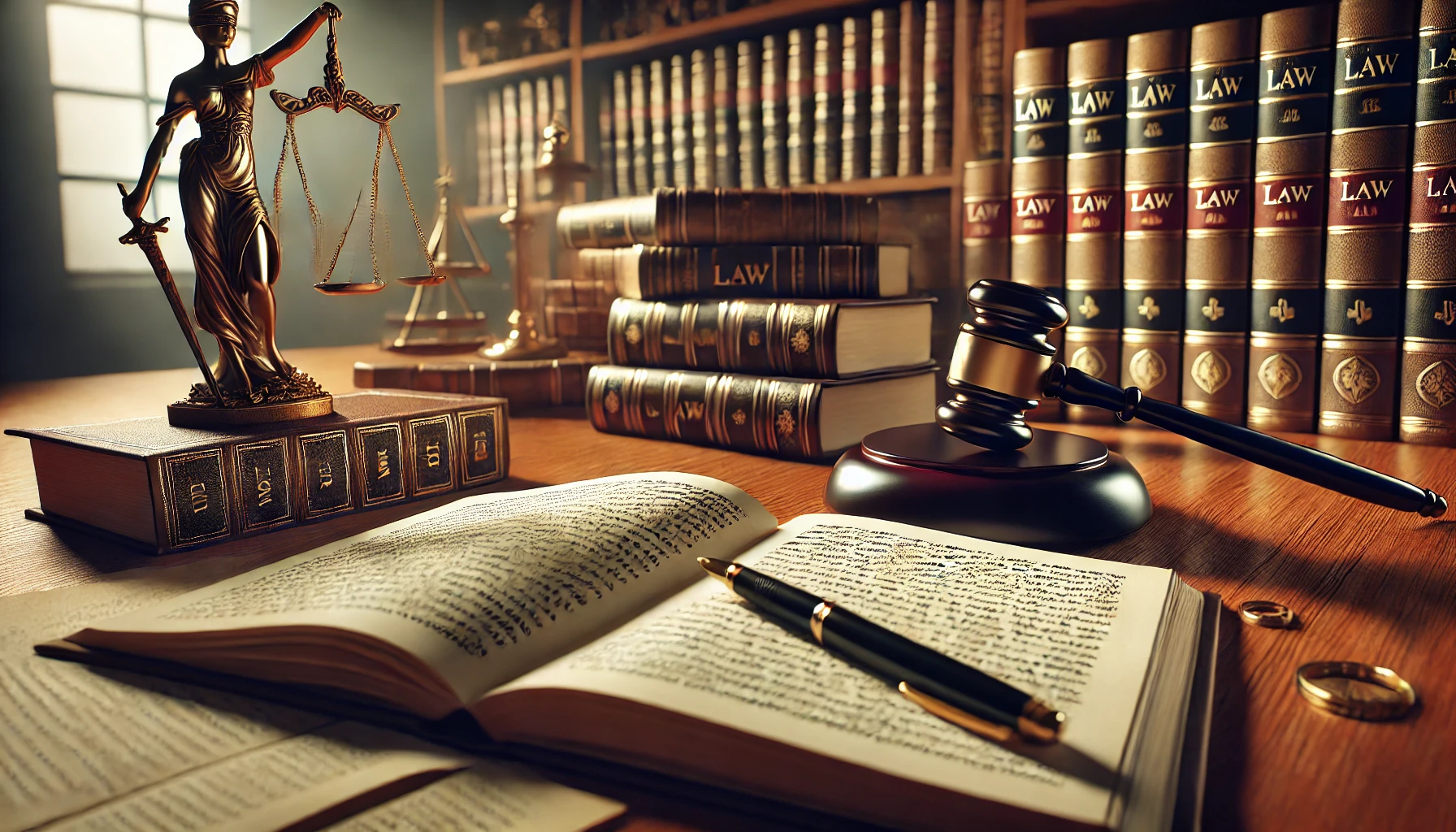Author: Sukanya Das, 1st Year, 3 years LLB, Binoda Law College, Durgapur, WB
Abstract: A Significant Turning point in the understanding of Parliament’s authority to change the Constitution was marked by the Kesvananda Bharati V. State of Kerala case, which is remembered as a landmark in Indian constitutional law. The Supreme Court of India rendered a historic decision in 1973 that established the “Basic Structure Doctrine,” which radically changed the constitutional landscape by stating that although Parliament has the authority to amend the Constitution, it cannot change or eliminate its core and essential elements. The case resulted from a complicated legal challenge filed by religious leader Kesavananda Bharati against state land reform regulations that affected the property rights of religious entities. In an exceptional court deliberation, the thirteen-judge constitutional bench rendered a complex ruling that ultimately upheld Parliamentary flexibility while preserving the fundamental values of the Constitution. According to the Basic Structure Doctrine, despite constitutional procedures, some essential traits-such as judicial review, federalism, secularism, democratic republic, and fundamental rights- are unchangeable and unaffected. A significant constitutional protection was established by this court invention, thwarting possible authoritarian attempts to radically alter the country’s democratic system. The ruling successfully struck a balance between constitutional protections and legislative supremacy, guaranteeing that although constitutional amendments are allowed, they cannot undermine the fundamental democratic and republican character of the document. The Supreme Court established a precedent that continues to influence India’s constitutional jurisprudence and democratic culture by clearly defining the parameters for constitutional modifications, positioning itself as a strong defender of constitutional integrity.
- Introduction
The landmark ruling in the 1973 case of kesavananda Bharati v. State of Kerala reshaped the parameters of Indian Constitutional Law. The Supreme Court’s decision went beyond standard legal analysis and created a defence for the Constitution’s democratic principles. Religious leader Kesavananda Bharati started the case, which first contested governmental land reforms but eventually grew to include important issue regarding Parliament’s authority to modify the Constitution under Article 368. By using the “Basic Structure Doctrine, ‘’ the thirteen-judge bench aimed to establish limits for legislative changes while maintaining the inviolability of fundamental values including democracy, secularism, and judicial scrutiny. This judicial innovation strengthened the judiciary’s function as a guardian of constitutional integrity by highlighting the harmony between legislative flexibility and constitutional preservation.
- Case Citation
The citation for the landmark judgement is Kesavananda Bharati v. State of Kerala, (1973) 4 SCC 225. This Supreme Court decision is considered a cornerstone in Indian constitutional law, marking the introduction of the Basic Structure Doctrine, which established significant limits on Parliament’s power to amend the Constitutional under Article 368.
- Facts of the Case
His Holiness Kesavananda Bharati, the leader of Kerala’s Edneer Mutt, filed a complicated lawsuit against the state government’s extensive land reform programs, which resulted in the Kesavananda Bharati case. The Kerala Land Reforms Act of 1963 and later constitutional amendments that attempted to severely limit the property management rights of religious groups were at the centre of the case. Bharati invoked his fundamental rights, especially Article 26, which gives religious institutions the freedom to run their operations, in a petition filed under Article 32 of the Indian Constitution. The case developed into a critical analysis of Parliament’s authority to modify the Constitution, going beyond a simple property dispute. The government’s vigorous pursuit of constitutional revisions during this politically turbulent time aroused serious worries about the possible erosion of fundamental liberties. A number of constitutional amendments including the First, Fourth, and Twenty-Fifth Amendments, which increased state authority to purchase and redistribute land, had already substantially changed the basic constitutional framework at the time of the judicial challenge. Bharati’s appeal, which contested both the particular land reforms and the larger constitutional framework that permitted such extensive legislative changes, marked a turning point in his opposition to what he saw as governmental overreach. The case raised important constitutional issues regarding the preservation of fundamental rights, the boundaries of parliamentary amendment authority, and the ability of legislative bodies to radically change the fundamental framework of the Constitution. Kesavanandas Bharati unintentionally paved the way for one of the most important judicial reviews in Indian Constitutional history by contesting the Kerala Land Reforms Act and the Constitutional amendments that supported such legislative interventions. This ultimately compelled the Supreme Court to draw lines defining the limits of Parliamentary authority and establishing vital protections for the integrity of the constitution.
- Issues Presented
In the Kesavananda Bharati case, the Supreme Court was asked to decide important constitutional questions pertaining to Parliament’s authority to change the Constitution under Article 368. Two basic questions form the basis of the main legal questions:
- Whether Parliament’s power to amend the Constitution was absolute and unlimited, and
- Whether there were any explicit or implicit restrictions that would prevent Parliament from changing the corer provisions of the Constitution. In order to resolve the crucial balance between parliamentary supremacy and constitutional integrity, this judicial examination aimed to conclusively establish the extent and bounds of legislative power in amending the constitutional framework.
- Arguments
- Petitioner’s Arguments
- Constitutional Integrity
- Argued that Parliament’s power to amend the Constitution was fundamentally limited
- Contended that amendments cannot destroy or fundamentally alter the Constitution’s basic structure
- Core Legal Principles
- Emphasized that amendment powers under Article 368 do not include the ability to erode essential constitutional features
- Specifically highlighted protection of principles such as:
- Secularism
- Democratic governance
- Fundamental rights
- Legal Strategy
- Counsel Nani Palkhivala presented a nuanced argument challenging unlimited parliamentary amendment power
- Sought to establish clear boundaries for constitutional modifications
- Argued that preserving the Constitution’s fundamental framework was paramount
- Constitutional Philosophy
- Proposed that the Constitutional has an inherent, inviolable core that cannot be arbitrarily changed
- Suggested that unrestricted amendment power would effectively permit dismantling of core constitutional principles
- Fundamental Rights Protection
- Stressed the importance of maintaining the Constitution’s original intent
- Argued that radical amendments could potentially compromise citizen’s fundamental rights and constitutional protections
- Respondent’s Arguments
- Unlimited Amendment Power
- Argued that Parliament’s power to amend the Constitutional was absolute and unrestricted
- Asserted that Parliament represents the will of the people and thus should have comprehensive amendment capabilities
- Legal Precedent
- Relied on the earlier Golaknath case interpretation of parliamentary powers
- Contended that previous judicial interpretations supported unlimited amendment rights
- Sovereignty and Representation
- Claimed that as a democratically elected body, Parliament has the prerogative to modify constitutional provisions
- Argued that the representative nature of Parliament justifies extensive amendment powers
- Fundamental Rights Modification
- Maintained that Parliament could amend any provision, including fundamental rights
- Suggested that constitutional flexibility was essential for governance and societal progress
- Constitutional Adaptability
- Emphasized the need for the Constitution to remain dynamic and responsive to changing social and political contexts
- Argued that restricting amendment powers would impede legislative effectiveness and national development
- Institutional Authority
- Positioned Parliament as the supreme legislative body with inherent constitutional modification rights
- Challenge any judicial limitations on parliamentary amendment powers
6.Relevant Legal Provisions
1. Article 368: Constitutional Amendment Procedure
- Provisions the fundamental mechanism for amending the Indian Constitution
- Specifies the procedural requirements for introducing and passing constitutional amendments
- Became the central focus of legal debates in the Kesavananda Bharati case
2. Fundamental Rights Articles
- Article 13: Deals with laws inconsistent with fundamental rights
- Article 14: Guarantees equally before law
- Article 19: Provides various fundamental freedoms
- Article 21: Protection of life and personal liberty
- Articles 25-26: Ensures religious freedom and rights of religious institutions
3. Scope of Provisions
- These articles were critically examined to understand:
- The extent of parliamentary amendment powers
- Potential limitations on modifying fundamental rights
- Balance between legislative flexibility and constitutional protection
4. Constitutional Interpretation
- The case required comprehensive analysis of these provisions
- Sought to establish clear boundaries of constitutional amendment powers
- Aimed to protect the fundamental essence of the Constitution
5.Legal Significance
- Explored the relationship between different constitutional articles
- Challenge the traditional understanding of parliamentary powers
- Established a framework for future constitutional interpretation
7.Court’s Decision
1. Landmark Ruling
- Supreme Court delivered a historic judgment with a narrow 7:6 majority
- Fundamentally reinterpreted the scope of parliamentary amendment powers
2. Basic Structure Doctrine
- Established that Parliament cannot alter the Constitution’s “basic structure”
- Limited the extent of potential constitutional amendments
- Introduced a critical constraint on legislative modification powers
3. Key Judicial Findings
- Affirmed Parliament’s broad amending powers under Article 368
- Simultaneously imposed significant restrictions to protect constitutional integrity
- Prevent potential undermining of the Constitution’s essential framework
4. Judicial Reasoning
- Recognized the need to balance legislative flexibility with constitutional preservation
- Created a nuanced approach to constitutional amendments
- Established judiciary as a guardian of constitutional principles
5.Implications
- Marked a significant shift in constitutional law interpretation
- Provided a mechanism to protect fundamental constitutional values
- Established a precedent for future constitutional challenges
6.Long-term Impact
- Transformed understanding of parliamentary powers
- Created a robust mechanism to prevent arbitrary constitutional modifications
- Ensured the Constitution’s core principles remain inviolable
8.Reasoning of the Court
Through the Basic Structure Doctrine, the Supreme Court provided a sophisticated interpretation of the authority to modify the constitution. The Court set important restrictions to safeguard core constitutional values while acknowledging Parliament’s extensive amendment powers. The ruling underlined that constitutional principles such as democratic governance, secularism, and fundamental rights cannot be destroyed by changes. The Court established a safeguard against possibly capricious changes by establishing the judiciary as the protector of constitutional integrity. In order to prevent short-term political majorities from drastically altering India’s constitutional framework, the rationale struck a balance between legislative flexibility and constitutional preservation.
9. Basic Structure Doctrine
A crucial legal theory that was established by the historic Kesavananda Bharati case, the Basic Structure Doctrine outlines certain essential elements of the Indian Constitution that are unchangeable, not even by Parliament. The theory is an essential of the authority to modify the constitution.
Key aspects of the Basic Structure include:
- Supremacy of the Constitution
- Republication and democratic form of government
- Secular character of the Constitution
- Separation of powers
This theory has developed into a potent legal instrument that has been applied in numerous instances to declare modifications that threatened to weaken or compromise these essential components of the Constitution unconstitutional. It successfully strikes a balance between maintaining the fundamental qualities of the constitution and the necessity for its progress.
10. Dissenting Opinions
Justice A.N. Ray, along with other judges, presented a significant dissenting view in the Kesavananda Bharati case. The core of their dissent cantered on Parliament’s amending powers under Article 368. Their key arguments were:
- No implied limitations existed on Parliament’s power to amend the Constitution
- The legislation should retain unrestricted authority to amend any part of the Constitution
- The dissent expressed concerns about judicial overreach into the domain of legislative affairs
The underlying conflict between judicial review and parliamentary supremacy in constitutional concerns was brought to light by this dissenting opinion. The dispute was a reflection of larger worries about how India’s constitutional system divides authority between the legislative and the court.
11. Impact and Significance
With broad ramifications that continue to influence the nation’s legal system, the Kesavananda Bharati ruling is pillar of Indian Constitutional law. Its importance can be viewed from several angles:
- Establishment of the Basic Structure Doctrine:
- Created a vital check on Parliament’s amending powers
- Became a powerful tool for preserving the Constitution’s fundamental essence
- Serves as a safeguard against potential erosion of constitutional principles
- Judicial Impact:
- Reinforced the judiciary’s role as the guardian of the Constitution
- Has been actively invoked in subsequent cases to strike down constitutional amendments that threatened the fundamental framework of governance
- Strengthened the Supreme Court’s power of judicial review
- Historical significance:
- Demonstrated resilience of constitutional principles even during political upheavals
- Fundamentally shaped the interpretation of constitutional law in India
- Created a lasting balance between parliamentary power and constitutional integrity
Due to its lasting impact, the ruling is regarded as one of the most important rulings in Indian constitutional history, defining tenets that uphold the country’s democratic and constitutional foundation.
12. Critical Analysis
By guaranteeing that amendments do not deviate from the fundamental framework of the Constitution, the Basic Structure Doctrine is frequently commended for serving as a check on legislative overreach. Critics, however, argue that it gives the judiciary undue power by enabling it to decide and interpret what the “Basic Structure” is. The extent of judicial scrutiny democratic accountability, and the possibility of judicial overreach are among the issues brought up by this concentration of authority within the judiciary, which has spurred discussion about the distribution of power in Indian democracy.
13. Conclusion
A seminal ruling that has radically changed the terrain of Indian constitutional law is the Kesavananda Bharati case. The Supreme Court has made sure that some fundamental ideas of the Constitution are shielded from legislative interference by adopting the Basic Structure Doctrine. The delicate balance of power in a democratic system and the significance of defending fundamental rights and values are both brought home by this case.
14.Bibliography
- Kesavananda Bharat v. State of Kerala, (1973) 4 SCC 225. [ Kesavananda Bharati v. State of Kerala (1973) : case analysis ] [ Kesavananda Bharati v. State of Kerala (1973) : case analysis ]
- Relevant constitutional articles and legal precedents as discussed in the analysis. [ Law & Justice2.pmd ]
- Scholarly articles on constitutional amendments and judicial review. [Kesavananda Bharati Case vs State of Kerala, Judgement, Analysis ] [Case Analysis Of Keshvananda Bharati v/s State Of Kerala (1973) ]



Leave a Reply